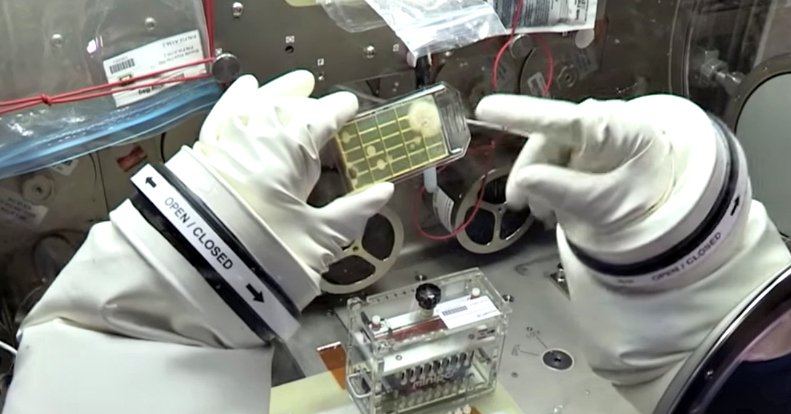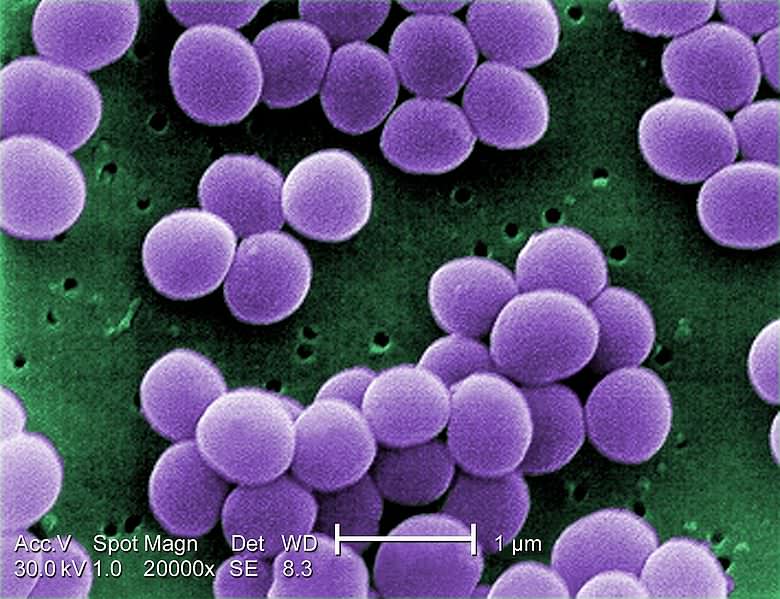For years, scientists have been conducting studies aboard the International Space Station (ISS) to determine the effects of living in space on humans and micro-organisms. In addition to the high levels of radiation, there are also worries that long-term exposure to microgravity could cause genetic mutations. Understanding these, and coming up with counter-measures, is essential if humanity is to become a truly space-faring species.
Interestingly enough, a team of researchers from Northwestern University recently conducted a study with bacteria that was kept aboard the ISS. Contrary to what many suspected, the bacteria did not mutate into a drug-resistant super strain, but instead mutated to adapt to its environment. These results could be vital when it comes to understanding how living beings will adapt to the stressful environment of space.
The study that describes the team’s finding recently appeared in the mSystems, a scientific journal published by the American Society for Microbiology. The study was led by Erica Hartmann, an assistant professor with the Department of Civil and Environmental Engineering (DCEE) at NWU, and included multiple DCEE graduate and postdoctoral researchers and Sarah Castro-Wallace of the NASA Johnson Space Center.

Studies like this are essential for missions that are planned for the near future, which include NASA’s plans for renewed missions to the lunar surface and their proposed crewed mission to Mars. On top of that, China, Russia and India are also planning on send astronauts to the Moon in the coming decades. As Professor Hartmann explained in an NWU press statement:
“There has been a lot of speculation about radiation, microgravity and the lack of ventilation and how that might affect living organisms, including bacteria. These are stressful, harsh conditions. Does the environment select for superbugs because they have an advantage? The answer appears to be ‘no.’”
For the sake of their study, Hartmann and her associates consulted data from the National Center for Biotechnology Information (NCBI), which maintains archival information on microbe experiments conducted aboard the ISS. Specifically, they assessed how the bacteria strains Staphylococcus aureus and Bacillus cereus grew in space.
The former is found on human skin and contains the drug-resistant MRSA strain, which makes it responsible for several difficult-to-treat infections in humans. The latter lives in the soil and and has few implications for human health, but still yielded valuable information on how terrestrial microbes grow when removed from their comfort zone and subjected to the unfamiliar conditions of space.

“Bacteria that live on skin are very happy there,” Hartmann said. “Your skin is warm and has certain oils and organic chemicals that bacteria really like. When you shed those bacteria, they find themselves living in a very different environment. A building’s surface is cold and barren, which is extremely stressful for certain bacteria.”
When the team compared how these strains grew aboard the ISS to how the same strains grow on Earth. What they found was that the bacteria living on the ISS mutated in order to adapt to the local conditions, selecting advantageous genes to be able to continue to feed, grow and function in microgravity and when exposed to higher levels of radiation.
Ryan Blaustein, a postdoctoral fellow in Hartmann’s laboratory who was the first author on the study, indicated that this was a surprising result. “Based on genomic analysis, it looks like bacteria are adapting to live — not evolving to cause disease,” he said. “We didn’t see anything special about antibiotic resistance or virulence in the space station’s bacteria.”
This is certainly good news for future astronauts, not to mention people who are hoping to take part in the burgeoning space tourism industry someday. In both cases, crews are forced to live, work, and generally pass the time in tiny capsules or modules where there is no ventilation and air circulates for long periods of time.

Given the health risks, knowing that terrestrial bacteria won’t mutate into super-germs that are even more resistant to antibiotics is certainly a relief. Of course, Hartmann and her colleagues also emphasized that this study does not mean that germs cannot proliferate once they get into a spacecraft or aboard a space station:
“Everywhere you go, you bring your microbes with you. Astronauts are exceedingly healthy people. But as we talk about expanding space flight to tourists who do not necessarily meet astronaut criteria, we don’t know what will happen. We can’t say that if you put someone with an infection into a closed bubble in space that it won’t transfer to other people. It’s like when someone coughs on an airplane, and everyone gets sick.”
As always, space exploration poses many risks, and the prospect of sending astronauts on longer journeys or tourists into space presents many challenges. Luckily, we have decades of research to lean on and plenty of cutting-edge experiments to help us get informed before that day comes.
This study was made possible thanks to support provided by the Searle Leadership Fund and the National Institutes of Health (NIH).
Further Reading: Northwestern University, mSystems

